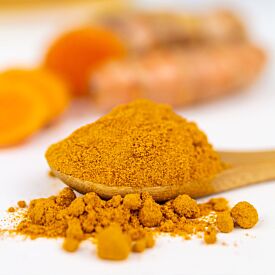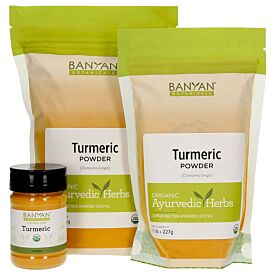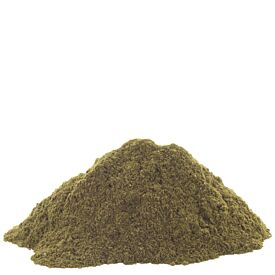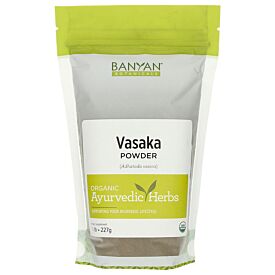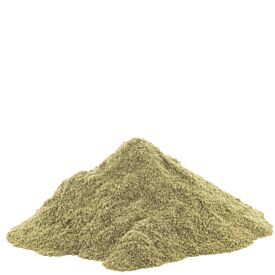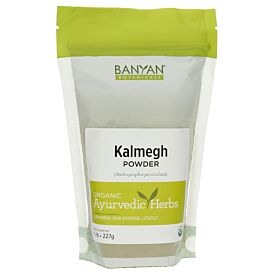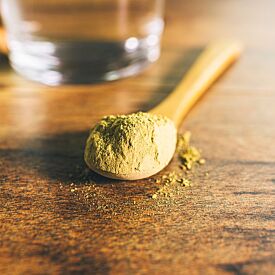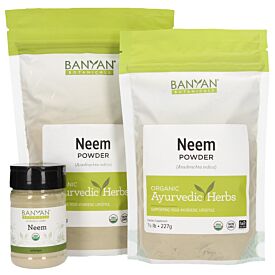The Taste of Spring: Why Bitter Is So Important
Great pleasure can come from enjoying a delectable meal among friends in a perfect environment. And when we’re savoring our food, it’s easy to forget that the sense of taste plays an active role in our state of health and well-being. Some of the flavors we like or dislike may purely be out of preference, yet there are other tastes that act as a component of our natural defense mechanism. When we bite into something bitter, our first reaction may not be to have more, because some bitter plants are also poisonous or dangerous when eaten in large amounts. Still, despite many of us having an aversion to bitter foods, the profile of this taste explains why it is not to be avoided entirely.
Bitter, or tikta, is one of Ayurveda’s six tastes. Just like each dosha is comprised of two elements, so is each taste. When we perceive bitter, we are really detecting the qualities of ether and air in our food. This is important because together these elements bring an overall cool, light, and dry characteristic, indicating its qualitative properties as well as when and for whom this taste should be used.
Benefits of Bitter Foods
Whether consuming a bitter food, culinary spice, or medicinal herb, one of the primary actions we’re invoking with this taste is detoxification. Bitters are categorically alterative herbs which means they purify and bring chemical balance to the blood. This makes them especially useful for supporting the body’s natural defenses, no matter what the challenge may be. And as our main organ of detoxification is the liver, the bitter taste also encourages its function and an enhanced flow of bile. This helps keep our body’s own method for self-cleaning intact.
A strong reducing capability also accompanies the bitter taste. While in lower doses this could produce a tonifying effect, it is better associated with a clearing or drying action. For this reason, we reach for bitters when there is a need to remove excess fluid or mucus or to decrease ama (toxins). And though it isn’t always the case, pungent and astringent tastes are often secondary tastes of bitter food, both of which are synergistic with these effects.
For the pitta and kapha doshas, bitter can be quite balancing, however it will increase ether and air and likely leave those with a primary vata constitution feeling unwell. For anyone consuming the bitter taste in excess, there is a risk of feeling ungrounded, anxious, or fearful. Misuse, such as consuming bitter at the wrong time of year, in great amounts, or with a propensity toward vata imbalance, can also lead to an increase in cold, dryness, and ultimately wasting of tissue—all indicators of a severe vata imbalance.
To determine if one of your doshas is out of balance and needs your attention, consider taking the Ayurvedic Profile™ quiz. After completing this quiz, you’ll receive personalized diet and herbal recommendations that match your unique needs. You’ll even find out if you should be eating more or less bitter foods.
The Forgotten Taste
There can be a steep learning curve when becoming acquainted with the way taste impacts our health. If we were living in a time of hunting and gathering rather than importing and exporting, it would come as second nature to us that bitter foods are readily available in the spring. Mother Earth, always being the wiser, provides them to balance the stagnation and heaviness we accumulate during the winter. During the spring, we’d find bitter plants, like dark leafy greens, dandelion, burdock, fenugreek, and chicory if we were to forage for our daily provisions, and herbs such as neem, kutki, and kalmegh would appear with their recognizable bitter tastes once the last snow has finally melted.
In some cultures, bitters are intact as a part of the cuisine or a component of the dining experience. Bitter gourd or bitter melon is common in Asia, Africa, and the Caribbean, and European cultures use digestive bitters around mealtime to help ease digestive discomfort and support the ability to properly process and eliminate food. But in our North American culture, aside from chocolate and coffee, one has to make a conscious effort to weave bitter foods into their diet.
If you’re not characteristically daring when it comes to making culinary changes, try a simple side dish of greens like wilted arugula or steamed chard. For the ultimate convenience, try the sautéed collard greens recipe below!

Bitter Greens Recipe: Sautéed Collards with Turmeric and Paprika
Ingredients:
- 1 bunch collard greens, cut into ribbons
- 1 tablespoon olive oil
- 1 clove garlic, minced
- ¼ teaspoon turmeric
- 1 teaspoon paprika
- Salt to taste
Directions:
Wash the collard greens and pat dry. Remove the stems and stack the leaves lengthwise. Roll the leaves tightly, keeping all of the leaves together. Cut the leaves into ¼ inch slices, creating ribbons.
Heat oil in a pan over medium heat. Add the garlic and turmeric, sautéing 1–2 minutes, making sure not to brown or burn the garlic. Add collard greens to pan and stir. Sauté 4–5 minutes or until fully wilted. Stir in paprika and salt to taste.






